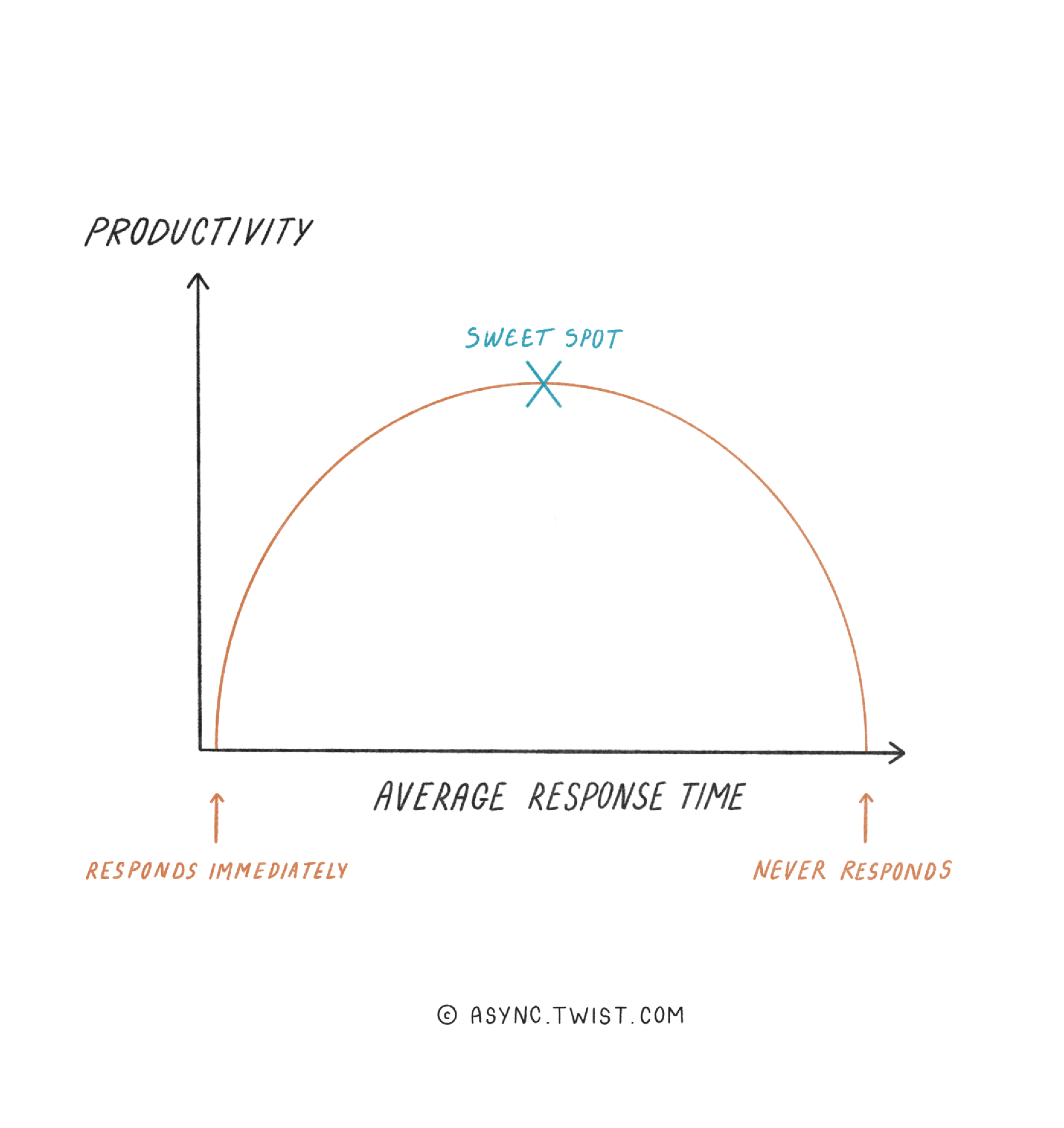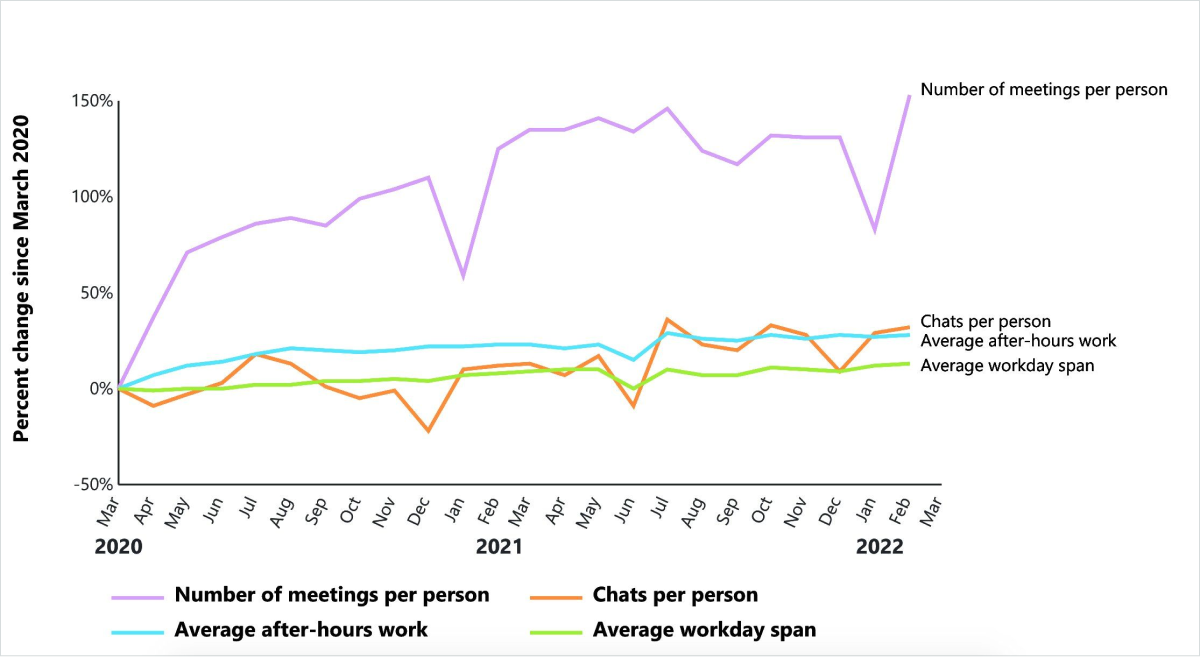How companies made productivity a personal problem
By Becky Kane

I’ve spent the last eight years of my professional life writing about personal productivity. I know the ins and outs of GTD. I’ve eaten many a frog. I can sing the praises of pomodoro and time blocking and all the latest science-backed tricks for staying focused.
What I’ve discovered is this:
It’s easy to get lost in the promise of personal optimization — if we only use this new app or try this new method or read just one more listicle, we’ll finally unlock the secret to having the time and energy to do it all.
But when you zoom out, you start to realize that most productivity advice boils down to strategies for protecting yourself from your own company.
The productivity-industrial complex is built to help individuals get things done in spite of the constant meetings, endemic distractions, and perpetual overwhelm that have come to define modern work.
Which makes you wonder, how the hell did finding the time and focus to do our actual jobs become a personal problem?!
How modern work works against us
One would assume that companies want to help their workers be as productive as possible, but somehow that’s not the reality most of us live in. The way we work actually feels uniquely designed to keep us distracted, overwhelmed, and constantly putting out fires.

According to the Harvard Business Review, “collaborative work — time spent on email, IM, phone, and video calls — has risen 50% or more over the past decade to consume 85% or more of most people’s work weeks.”
Take meetings for example. Meeting overload is nothing new, but since the pandemic forced everyone to go remote, companies have let “meeting inflation” run rampant. A study published by Microsoft found that time spent in meetings has steadily increased over the past two years to the point that workers now spend 253% more time in meetings today than they did before the pandemic.

If you’re not in a meeting, you’re likely in Slack or Teams or Discord reacting to a firehose of information and incoming requests. In an age of remote work, responsiveness has become a way to signal dedication and work ethic — the digital equivalent of putting in long hours at the office. Our workplaces saddle us with unrealistic expectations of constant availability, and modern work chat tools are only making things worse.
According to 2020 data collected for The Wall Street Journal, the median response time for work emails was 72 minutes. For Slack messages, the median response time dropped to just 16 minutes and 18 seconds. Slack itself boasted that users spend an average of ten hours every weekday in the app, and that was back in 2015 when most companies were still working from the office.

This real-time-all-the-time way of working may reassure managers, but it’s counterproductive in the most literal sense of the word. The kinds of work that create the most value in a knowledge economy — coding, designing, writing, analyzing, researching, strategizing, thinking — require long, uninterrupted blocks of time for finding focus and flow. But meetings and pings chop our time and attention into smaller and smaller pieces, and push work further and further into our lives.
The same Microsoft study found that people are increasingly compensating for the sheer number of meetings and digital distractions by working a “second shift” in the evening starting around 9pm because it’s the only time they won’t be interrupted.

Your boss may not explicitly tell you to log back into work at night or respond to messages on a Sunday, but the momentum of the workplace creates the conditions where it feels like the only choice if you want to keep up. And if you can’t keep up, well, that’s a personal problem.
The impact on our productivity is bad enough, but when it comes to our mental health, it gets even worse. Research shows that stress and anxiety is caused by a perceived lack of control and unpredictability, the very things that both meetings and instant messaging introduce into our workdays.
Meetings dictate how you spend your time regardless of how much other work you have piling up.
Any given chat message could be an innocuous meme from a coworker…or an urgent request from your boss that will derail your day’s to-do list. It’s no wonder that, for many workers, Slack’s signature brush knock knock knock notification sound triggers a physical fight-or-flight stress response.
I just heard a sound from Slack but have no idea where it came from. Is this anxiety?
— Jasoon (@JasoonPorter) April 19, 2022
it's normal for your entire body to tense up when you hear the slack notif sound right
— Renne Millennia 🐛🌂 Vtuber (@renne_millennia) April 22, 2022
nothing gives me more anxiety these days than slack
— 🏳️🌈 your friendly neighborhood force for good (@allie_nimmons) April 19, 2022
You know something is deeply broken when your company’s central tool for getting things done goes down for several hours, and you end up feeling relieved and even more productive.
The limitations of personal productivity (and what we need instead)
Our inability to focus isn’t our companies’ fault, entirely. Our brains are wired to prioritize the urgent over the important and to seek out novelty and distraction over sticking with a hard task. Strategies for personal productivity will always have their place.
But you can’t time block your way out of an always-on work culture. You can’t hack your way to focus and flow with a work calendar that looks like this:
Manager's schedule: pic.twitter.com/JGs7E24cM6
— Suhail (@Suhail) March 5, 2021
Our natural human tendencies are already working against us. We need workplace cultures and tools that combat our productivity struggles, not compound them. Individual workers need to stop internalizing systemic problems in the workplace as personal failures, and companies need to start taking responsibility for creating environments where their employees don’t just try to survive but thrive.
The solution to too many meetings isn’t time blocking — it’s fewer meetings. The solution to too many interruptions isn’t a Pomodoro timer — it’s fewer interruptions.
Luckily, there’s a proven alternative mode of work that the world’s most successful remote companies — Automattic, Zapier, GitLab, Buffer, Doist — have been employing for decades. It’s called asynchronous collaboration — communication that happens without everyone having to present at the same time.
Async collaboration allows everyone to respond to work messages on their own schedules, not everyone else's. Meetings are the exception, not the rule. Expected response times are measured in hours, not minutes.
That means you can dedicate your most productive hours to focused work and truly disconnect at the end of the day knowing your team communication will still be there when you reconnect.
The beauty of asynchronous communication is that it allows us to actually focus. Fewer notifications, less stress, more concentration, better work, better results.
— Tony Jamous (@jamingo) February 8, 2022
| Real-time | Asynchronous |
|---|---|
| Communication requires all team members to be present at the same time, in meetings and video calls or responding quickly to work chats or emails. | Communication happens in writing or prerecorded video/audio with team members responding on their own schedules. |
| Everyone is tied to more or less the same work schedule. | Everyone can work when it works best for them. |
| Prioritizes speed of collaboration. | Prioritizes focus and flexibility. |
Here’s where companies can start when it comes to protecting their employees’ time and attention with async work:
- Set explicit guidelines around response times for your teammates. Experiment with what works for your team. You may be surprised that the world doesn’t stop turning when you give people 24 hours to respond to messages.
- Use tools that support asynchronous communication to replace meetings and real-time messaging apps.
- Set up a separate communication channel for emergencies only. This should be the only tool where your team gets instant and urgent notifications. (Our team uses Telegram.)
- Invest in team-wide transparency and documentation so everyone can find the information and context they need when they need it without having to ask for it.
- Let teammates set their own schedules so they can work when they’re most productive and disconnect fully when their work is done.
- Measure success by the work that’s actually getting done, not the hours someone spends in meetings or the speed with which they respond to messages.
- Make sure team leaders are modeling good async communication i.e. not responding immediately to every message. People won’t trust it unless their bosses’ actions align with their words.
Not a decision-maker on your team? You can still influence your team culture. Share this newsletter with your team and start a conversation around the impact of real-time communication on your team’s ability to do your jobs.
If all else fails, vote with your feet. More and more companies are waking up to the reality that remote, async-first work is the future, and they are hiring.
Does your team already operate asynchronously with a truly flexible schedule? Tell people about it! Surveys show that employees rank async work (aka the ability to set your own work hours) even higher than remote work when it comes to workplace benefits.
The number one determinant of happiness at work isn’t collaboration, serendipity, or social interaction (as important as those things may be) — it’s making progress on meaningful work. Companies need to start making it their jobs to help us do ours.
What’s Twist? Twist is an async messaging app for teams burned out by real-time chat, meetings, and email.
You don’t need to use Twist to get a ton of value out of this newsletter and community. But if the topics we talk about resonate with you, there’s a good chance the app will too. See what makes Twist different →
🌎 Built asynchronously by the fully remote team at Doist
